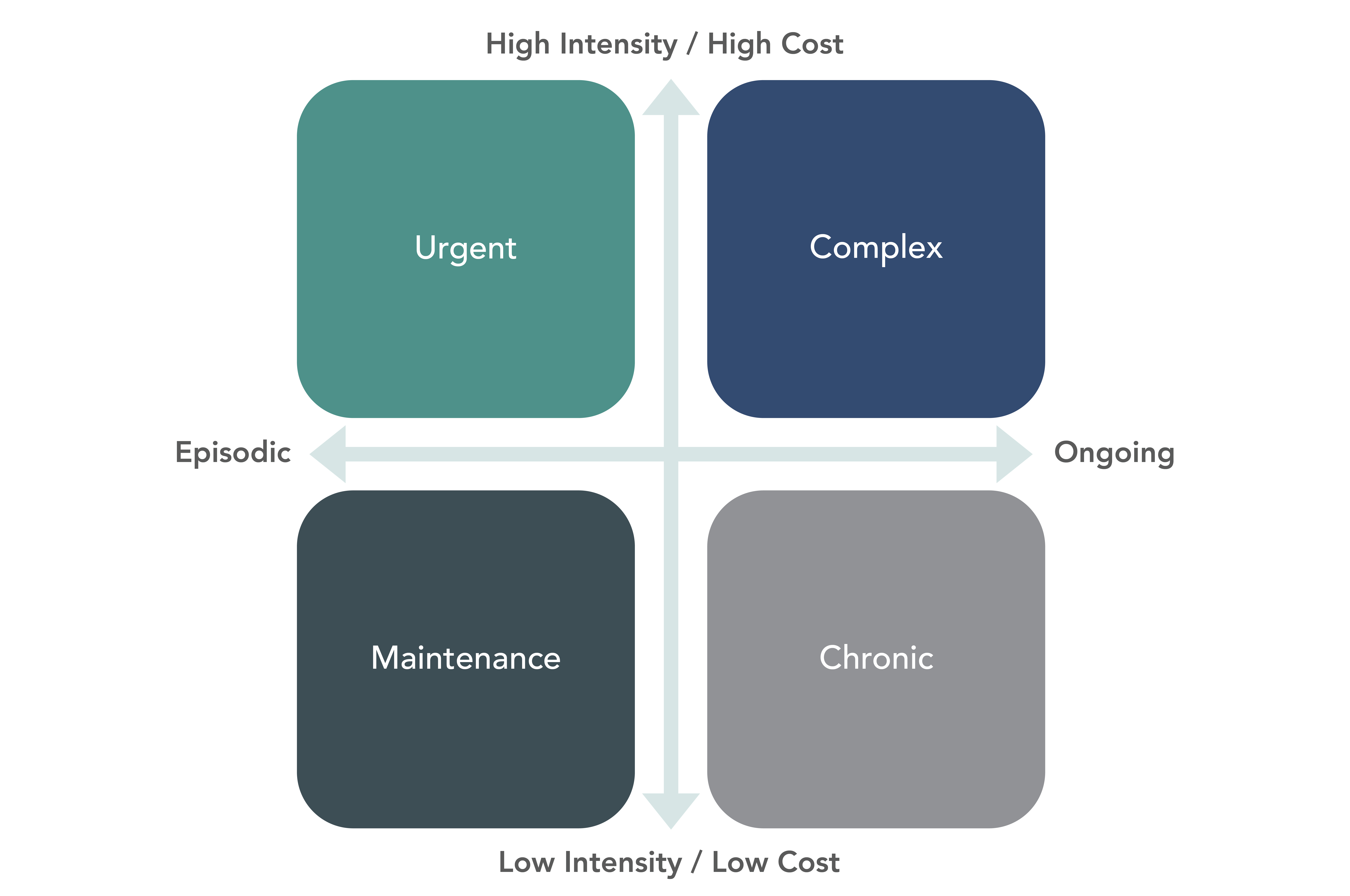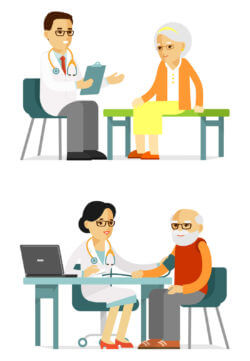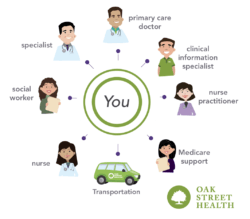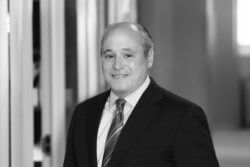March 21, 2018

Scaling Relationship-Based Care: “Different Spokes (Care Models) for Different Folks”
In 1970, Marcus Welby, MD became ABC Television’s first show to top network television ratings. Dr. Welby was a cheerful family practice physician with a soothing bedside manner who was on a first-name basis with his patients. In the toughest cases, Welby focused on his patients’ clinical, social and even spiritual needs. In turn, patients trusted Welby, embraced his care and got better.
The best, most cost-effective health outcomes occur when providers build long-term, trusting relationships with patients and pro-actively treat disease through real engagement, frequent dialogue and shared decision-making. At its best, primary care helps prevent, mitigate and manage chronic disease and other serious conditions.
Unfortunately, American healthcare has largely forgotten the wisdom of patient-centered primary care. Specialization, technology and activity-based billing practices rob patients of vital time and engagement with their primary care doctors. Personal connection atrophies as patients move through mechanized treatment regimens.
Fortunately, powerful new primary care companies are emerging to fill America’s care management void. Although their business models vary, these companies share an unshakable belief that relationship-based healthcare generates better outcomes, happier customers and lower all-in costs. Somewhere, Marcus Welby is nodding in vigorous agreement.
NEW PRIMARY CARE BUSINESS MODELS
The most challenging and costly patients are chronically ill and often poor, elderly or both. They rarely receive the coordinated, holistic primary healthcare services that prevent complicated, burdensome and costly acute interventions.
The problem is not a lack of financial resources, but poor distribution of those resources and perverse incentives. There’s plenty of money in the system to amputate a foot, but not enough to manage the diabetes that necessitates the amputation.
Americans recognize the need for enhanced primary care. 86% believe that access to primary care leads to better outcomes, lower costs and healthier lives.1 Governments, insurers and enlightened employers increasingly recognize that engaged primary care translates into a healthier, more productive American workforce. Despite its importance, experts predict a shortfall of 14,900 to 35,600 primary care physicians by 2025.2
Capitalism’s genius is that it empowers enterprising companies to find and fill market needs. The demand for relationship-based primary care services combined with aligned payment models is catalyzing the growth of care management businesses that offer more coordinated, holistic and concierge-like services.
The primary care market divides into the following 4 quadrants based on care duration and intensity:

EPISODIC MAINTENANCE AND URGENT CARE
Episodic primary care activity centers on the following 2 activities:
- Annual physicals and routine diagnostic procedures with minimal follow-up.
- Visits for routine care.
In both cases, patients schedule appointments with their doctors during normal office hours. In fee-for-service (FFS) medicine, primary care physicians rarely spend enough time with patients to build deeply-informed relationships. Visits usually last 15 minutes or less. Every hour spent with patients necessitates two hours of administrative work. Primary care physicians are suffering “burnout” at unprecedented levels. This activity pattern degrades the care experience and frustrates both physicians and patients.
Treatment dysfunction extends to emergency departments, which serve as de facto “after-hours” primary care clinics. This approach to primary care is expensive, wasteful and not terribly effective. There is a better way.
New primary care businesses models are emerging that provide better, more convenient and lower-cost care. Telemedicine companies such as Zipnosis or Doctor-on-Demand and walk-in clinics such as Minute Clinic offer low-cost primary care services that tackle immediate care needs.
Other companies offer economical concierge-like services that enable primary care physicians to practice relationship-based care with an emphasis on prevention and long-term health. These new models extend the capabilities of primary care physicians and delight customers.
ONGOING CHRONIC AND COMPLEX CARE

The chronically ill, elderly and poor receive haphazard care management services under various FFS payment arrangements, including Medicare. In contrast, risk-based contracting (e.g. through Medicare Advantage), rewards providers that deliver integrated, relationship-based, holistic and preventive care. This is leading to the emergence of enhanced, relationship-based primary care companies.
People with multiple co-morbidities, behavioral health problems, addiction issues and significant social deficiencies (e.g., isolation, lack of housing, poor nutrition, etc.) require complex care services that address their clinical and social needs.
Treating complex patients requires “going the extra mile” to stabilize patients, monitor their progress and provide necessary services. To deliver such comprehensive care, primary care companies must do the following:
- Address behavioral health and addiction issues.
- Ensure adequate food, clothing, transportation and shelter.
- Build trusted relationships with patients.
- Engage with patients consistently, intensively and on their terms.
To manage this, such companies deploy integrated-care teams that deliver necessary services in community-based centers.
DIFFERENT SPOKES FOR DIFFERENT FOLKS
- High-growth primary care organizations target different populations (different folks) and orient their delivery models (different spokes) to meet client-specific needs. Though approaches vary, they share the following important characteristics:
- Capitated, value-based or at-risk payment models in distinct market segments that align physicians and care teams with patient needs, better outcomes and lower costs.
- Team-based care models that engage patients as consumers in convenient settings with comprehensive services.
- Supportive infrastructure that reduces administrative burdens and costs while enabling engagement, experience and service.
- Coordinated care services that promote early diagnosis, prevention and appropriate care interventions.
- Robust data sourcing, analytics and technology to identify risk, improve performance and enhance growth.
The following case studies illustrate how leading primary care companies tailor their services to fit the needs of specific primary care market segments. They illustrate the power of customer-focused business models.
ABSOLUTELY NECESSARY (COMPLEX CARE)

The most expensive patient in Maryland was a frequent user of ER services, often with multiple same-day visits. The integrated care team at AbsoluteCARE huddled one morning to discuss possible solutions.
The team’s van driver mentioned that the patient was outgoing and an active church-goer. Perhaps his social needs were more urgent than his medical needs. The team hired this patient to be their clinic’s greeter. He then received necessary care at the appropriate times, virtually eliminating subsequent ER visits. The patient’s health status transformed as he connected to his new community.
AbsoluteCARE launched in 2000 when it opened its first HIV Center of Excellence in Atlanta. Recognizing the persistent community need for more extensive services, it expanded its scope in 2009 to also offer primary and chronic care services.
In 2016, Guardian Life Insurance of America acquired AbsoluteCARE’s parent company Avesis.
AbsoluteCARE became a separate business providing holistic disease management services, essentially an “ambulatory ICU.” As its operating model matured, AbsoluteCARE expanded into additional geographies. Its success in new markets fuels its continued growth.
AbsoluteCARE treats the “sickest of the sick,” specifically the 5% of patients with the most challenging social and healthcare needs. These complex patients often live under stressful socio-economic conditions and suffer from addiction and behavioral health problems. They typically consume 30 to 40% of a health plan’s care expenditures.
Operating under risk contracts with government and commercial payers, AbsoluteCARE uses claims data and predictive analytics to identify members that are high cost and high risk. It builds attractive medical centers in urban neighborhoods and engages coordinated teams in comprehensive clinical and social care. Team members do “whatever it takes” to alleviate patient challenges and improve health.
Patients get 5-star concierge service and are “treated with love and respect,” according to AbsoluteCARE CEO Alan Cohn. Engagement starts with the basics, including food, clothing, shelter, addiction treatment and behavioral health services. The care teams address longer-term chronic care needs once patients stabilize. Routine services include regular check-ins and check-ups, nutrition counseling, diagnostics, pharmacy, medication adherence, lab, infusion, radiology, counseling, community outreach and education. The centers also have a wing that provides acute care for exacerbations of chronic conditions, further reducing emergency room utilization. Walk-ins are welcome.
“We’re changing lives,” Cohn notes. “From the time members first come to us, we see a real difference within six to nine months.” The progress made impacts the next generation. “If parents can do better, children do better. Ideally we can stop the cycle of inter-generational chronic disease.”
AbsoluteCARE’s approach to serving this population reduces emergency visits by 43%, inpatient admissions by 45%, inpatient days by 42%, and health plan costs by more than 30% annually. STAR measures have increased from the 20th percentile to the 90th percentile. The company plans to add 10 more locations over the next several years.
A TREE GROWS IN CHICAGO (CHRONIC AND COMPLEX CARE)
Oak Street Health is on a mission to “rebuild healthcare the way it should be.” CEO and Co-Founder Mike Pykosz and his partners launched Oak Street in 2012 on the premise that aligning the right staff with the right resources and the right payment model would generate better outcomes at lower costs with a better patient/customer experience.
Oak Street’s customers are primarily low-income urban seniors (i.e. “dual-eligible” to receive Medicare and Medicaid services). The company builds clinics that double as community centers in underserved neighborhoods. Oak Street’s centers offer a broad range of services related to clinical care, social work, education and entertainment that encourage frequent visits.
Upon moving into a new neighborhood center, Oak Street’s first challenge is to build community awareness. Oak Street staff conducts “boots on the ground” outreach to local churches and social clubs. Their integrated care teams spend extensive time with new members to get to know them and assess social and care needs.
One member, for example, learned about Oak Street through a church meeting. With some encouragement, he came regularly to his neighborhood clinic to teach classes on World War II. When the care team later noticed a prolonged absence, they checked-in and learned he had a sore foot. An Oak Street driver brought him to the clinic where staff diagnosed a serious infection. Instead of an amputation, a timely course of antibiotics cured the problem.

Medicare Advantage helped catalyze Oak Street’s business model. As CEO Mike Pykosz says, “We can take care of people knowing we’ll be fairly compensated.”
Oak Street assumes full financial responsibility for its patients and gets a percentage of savings from its health plan partners. This revenue allows Oak Street to devote significantly more resources than normal to complex member needs. Oak Street pilots any solutions that may produce better outcomes and reduce costs.
Oak Street is currently growing on three fronts: expanding its care model, moving into new geographies, and increasingly treating higher-risk Medicaid-only patients. “If their clinical needs are the same, and we can achieve better outcomes by serving those patients, we’ll do it,” Pykosz says.
ONCE MORE WITH FEELING (MAINTENANCE/CONCIERGE)
 Founded in 2005 by entrepreneur Dr. Tom X. Lee, OneMedical Group offers concierge medicine to on-the-go professionals without high annual fees. Just two years after opening a solo practice in San Francisco, Lee secured millions of expansion dollars from Benchmark Capital. Attracting young, healthy patients is essential to the company’s business model. For an annual membership fee of $199, patients receive the attention and services they want from trusted care providers. OneMedical’s clinics resemble boutique hotels. Short waits and last-minute availability are the norm.
Founded in 2005 by entrepreneur Dr. Tom X. Lee, OneMedical Group offers concierge medicine to on-the-go professionals without high annual fees. Just two years after opening a solo practice in San Francisco, Lee secured millions of expansion dollars from Benchmark Capital. Attracting young, healthy patients is essential to the company’s business model. For an annual membership fee of $199, patients receive the attention and services they want from trusted care providers. OneMedical’s clinics resemble boutique hotels. Short waits and last-minute availability are the norm.
Care delivery combines high-touch service with high-tech tools and applications. Members can access care through 24/7 phone support, virtual services and mobile apps that include health coaching. Patients can email their doctors with follow-up questions. OneMedical’s agile technology and data platforms keep administrative costs low.
The company increasingly offers direct contracting with enterprise customers, including Google and Uber. OneMedical is expanding aggressively into new markets and recruiting more primary care physicians.
IT TAKES A VILLAGE (BROADBAND PRIMARY CARE)

Village MD CEO Tim Barry says, “The problem with primary care is that we’ve taken this profession of people who love caring for a community of patients and forced them to work in ways that lead to sub-optimal outcomes.” In response, Village MD returns job satisfaction to the practice of medicine.
The company accomplishes this through an expansive approach to providing primary care services. Village MD’s “platform” incorporates data, technology, incentives and protocols to support their doctors in delivering superior primary care services. In essence, Village MD helps physicians serve their patients better.
Their primary care model focuses on total care and quality outcomes to eliminate unnecessary hospital admissions. As co-founder and CMO Clive Fields notes, “We’re concierge medicine without the concierge or the cost.”
When Village MD enters new markets, it partners with existing primary care physician groups and converts their physicians to risk-based contracts through management service organizations (MSOs). This aligns payment with desired treatment practices. To achieve optimal performance, the model requires leveraging size and scale across large patient populations.
Village MD invests in technology, analytics and management systems that reduce administrative burdens and drive aligned practices that lead to better outcomes, lower costs and less utilization. High levels of physician satisfaction indicate patient satisfaction.
Village MD works closely with its health plan partners to deliver 15-20% lower-cost care with better outcomes and member satisfaction. In 2015, it formed a joint venture with Community Health Network of Indianapolis called Primaria Health. This organization expanded rapidly to cover 130,000 members, becoming the largest primary care provider in Central Indiana.
PRIMARY CARE’S TRANSCENDENT ERA
Enhanced primary care services are essential for higher-functioning healthcare. As capitated payment models expand and evolve, new entrants innovate to address that societal need.
The battle for better primary care takes place on two fronts. Business model innovation focuses on market share and member satisfaction. Care delivery innovation focuses on clinical precision, optimal outcomes, reduced utilization and lower costs.
This bottom-up, customer-focused, business-savvy approach to healthcare transforms healthcare services, lives and even communities. The big lesson is that value works. When payment models align with patient needs, care delivery improves and care providers rediscover the joy of practicing medicine.
Winning primary care companies earn patient trust by delivering better, more engaged and more affordable care. The “Dr. Welby” approach to relationship-based medicine is their formula. Their divergent “spokes” encompass the totality of America’s primary care needs and holds great promise for the future of American healthcare.
SOURCES
- https://www.fiercehealthcare.com/practices/89-americans-value-relationship-primary-care-doctor
- https://www.aamc.org/newsroom/newsreleases/458074/2016_ workforce_projections_04052016.html
CO-AUTHORS

Edward Fishman co-leads the Firm’s Managed Care Advisory practice. Mr. Fishman joined Cain Brothers in 1996, and has 30 years’ experience advising both public and private companies in a variety of merger and acquisition, strategic advisory, and valuation transactions.

Court Houseworth is Co-Head of the Firm’s Mergers and Acquisitions Advisory practice and co-leads the Firm’s Managed Care and Behavioral Health advisory practices. In addition, Mr. Houseworth is a member of the Firm’s Executive Committee. Mr. Houseworth joined Cain Brothers in 2004 and has over 25 years’ experience advising both public and private companies in a variety of merger and acquisition, capital raising, and strategic advisory transactions, as well as valuations and nonprofit conversions.
Cain Brothers is a pre-eminent investment bank focused exclusively on healthcare. Our deep knowledge of the industry enables us to provide unique perspectives to our clients and is matched with the knowhow needed to efficiently execute the most complex transactions of all sizes. www.cainbrothers.com.
Disclaimer: The information contained in this report was obtained from various sources that we believe to be reliable, but we do not guarantee its accuracy or completeness. Additional information is available upon request. The information and opinions contained in this report speak only as of the date of this report and are subject to change without notice. This report has been prepared and circulated for general information only and presents the authors’ views of general market and economic conditions and specific industries and/or sectors. This report is not intended to and does not provide a recommendation with respect to any security. Any discussion of particular topics is not meant to be comprehensive and may be subject to change. This report does not take into account the financial position or particular needs or investment objectives of any individual or entity. The investment strategies, if any, discussed in this report may not be suitable for all investors. This report does not constitute an offer, or a solicitation of an offer to buy or sell any securities or other financial instruments, including any securities mentioned in this report. Nothing in this report constitutes or should be construed to be accounting, tax, investment or legal advice. Neither this report, nor any portions thereof, may be reproduced or redistributed by any person for any purpose without the written consent of Cain Brothers.
Cain Brothers is a member of SIPC. © 2018 Cain Brothers and Company, LLC





